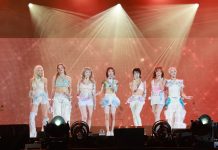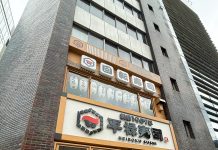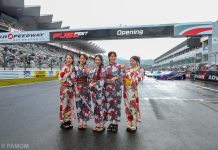A major retrospective exhibition of Japanese architect Sou Fujimoto has opened at the Mori Art Museum in Tokyo, running from July 2 to November 9, 2025. Titled “Sou Fujimoto: Primitive Future Forest”, the show marks the first large-scale solo presentation of Fujimoto’s nearly 30-year career, offering an immersive exploration of his past, present, and future projects through models, installations, and design concepts.
Born in Hokkaido in 1971, Fujimoto is known for his boundary-pushing work that spans residential buildings, cultural institutions, and large-scale public projects. With offices in Tokyo, Paris, and Shenzhen, he first gained recognition in 2000 for his proposal for the Aomori Museum of Art. Since then, he has completed acclaimed works such as the Musashino Art University Museum & Library in Tokyo (2010), the Serpentine Pavilion in London (2013), the L’Arbre Blanc residential tower in Montpellier (2019), and the House of Music in Budapest (2021). He is currently serving as the venue design producer for the 2025 Osaka-Kansai Expo, including the Expo’s centerpiece, the massive timber structure known as the “Grand Roof Ring.”
The exhibition brings together over 100 projects and 1,000 architectural elements—including scale models, design drawings, photographs, and prototypes—curated to form a labyrinthine installation titled the “Forest of Ideas.” Visitors can trace Fujimoto’s evolving approach from early works to speculative urban futures, reflecting his three central design themes: openness within boundaries, spatial ambiguity, and aggregation of many elements into a cohesive whole. Rather than traditional linear storytelling, the show invites audiences to experience his architectural philosophy as a living, organic network.
Another highlight is the partial 1:5 scale model of the Grand Roof Ring, a 2-kilometer-long wooden ring that will encircle the Expo site in Osaka. Visitors can enter the model to experience how the space might feel when completed. The ring symbolizes interconnectedness and openness, aiming to reimagine civic architecture in a fragmented world.
Collaboration plays a central role in this exhibition. Architectural historian Shunsuke Kurakata contributes a chronological narrative of Fujimoto’s career, linking his architectural experiments to wider social and cultural developments. Book director Yoshitaka Haba curates a contemplative reading space that connects Fujimoto’s design ideas to broader humanistic themes. Data scientist Hiroaki Miyata collaborates on a speculative urban prototype composed of interconnected spheres, proposing a post-linear city that embraces diversity and decentralization—an idea born from critiques of modern urban monotony.
One of the most distinctive installations features plush toy versions of Fujimoto’s buildings engaging in playful conversation. These handcrafted figures narrate their own design stories, offering insights into the creative process in an accessible and humorous way. Also on view are Fujimoto’s early sketches, some of which prefigure forms that would only be realized years later.
The exhibition concludes with “The Future Forest”, a vision of a spherical, resonant city that challenges verticality and homogeneity. Developed with Miyata, this 3D-printed city model reflects a new model of urban life where structures interconnect like ecosystems rather than follow rigid grids. The concept embraces diversity and fluidity, aligning with Fujimoto’s broader architectural ethos.
Visitors are encouraged to contribute their thoughts on future cities in blank booklets, with selected ideas to be shared at a public talk in October. This interactive element positions the exhibition not as a retrospective endpoint, but as an open invitation to participate in the continuing evolution of architecture.
Tickets are available via time-slot reservations, with discounts for students and seniors. The Mori Art Museum is located on the 53rd floor of Roppongi Hills Mori Tower in central Tokyo. For more details, visit the official website.
Fujimoto’s retrospective is more than a survey of one architect’s career—it’s a living conversation about how architecture can shape, reflect, and adapt to the complexity of the world to come.
Exhibition Information
Exhibition Title: 藤本壮介展 原初的な未来の森 (Sou Fujimoto: Primitive Future Forest)
Venue: Mori Art Museum (Roppongi Hills Mori Tower, 53F)
Dates: July 2, 2025 – November 9, 2025
Hours: 10:00–22:00 (Tuesdays until 17:00)
Closed: Open daily
Admission: Timed-entry tickets available online (discounts for students, children, and seniors)
Official Exhibition Page (EN): https://www.mori.art.museum/en/exhibitions/soufujimoto/
Exhibition Page (JP): https://www.mori.art.museum/jp/exhibitions/soufujimoto/
Ticket Info (JP): https://www.mori.art.museum/jp/ticket/
For more media, please visit:



















